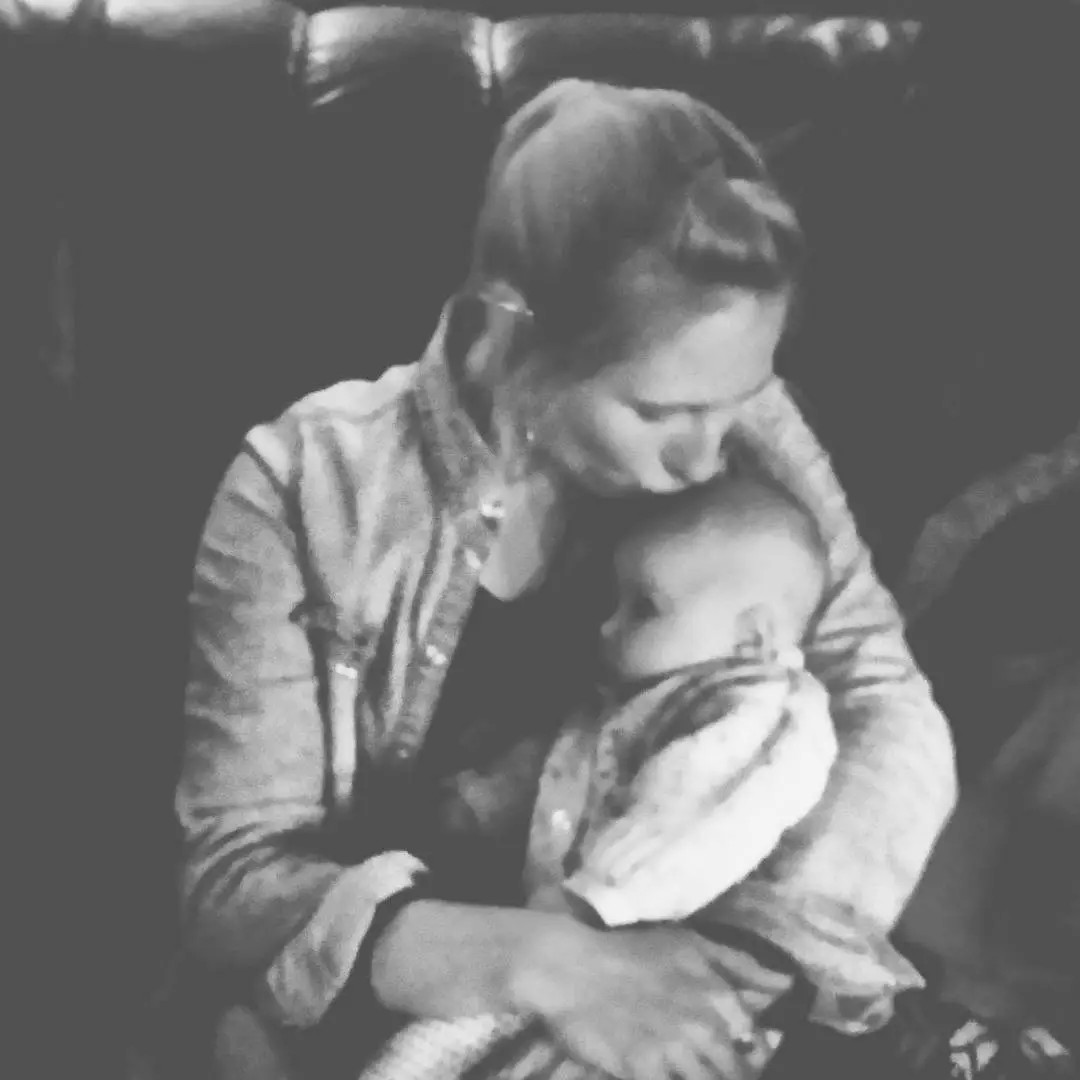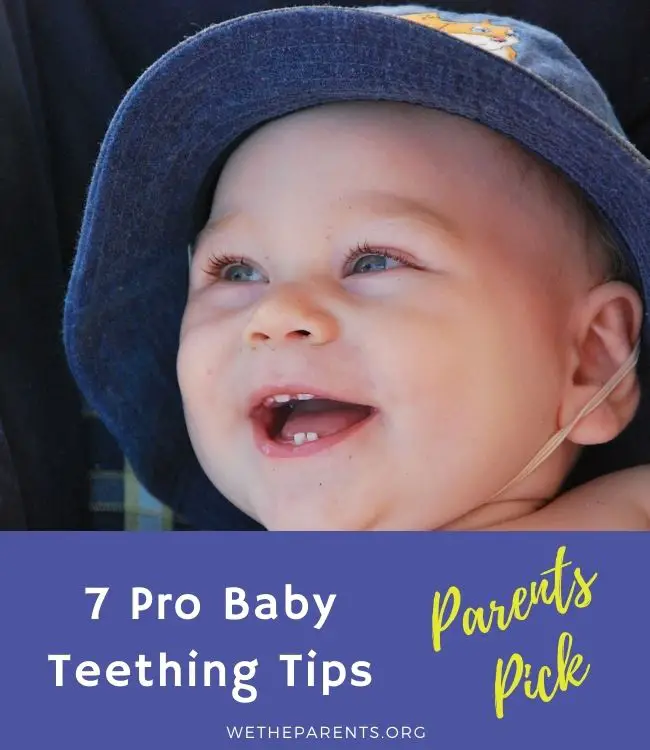Teething is a common cause of discomfort in babies between the ages of 6 and 24 months. However, is teeth cutting as big a deal as some parents make it out to be?
Here, we bring you a list of science-based teething remedies as well as all you need to know about infantile teeth cutting.
In this article:
When do babies teeth start coming in?
According to the American Dental Association, a baby’s primary teeth start to appear between 6 to 12 months of age. 1Mouth Healthy – Babyteeth
mouthhealthy.org
Children are born with all 20 of their baby teeth below their gums. These teeth will slowly emerge till a child is around 3 years old. Check out the ADA’s primary tooth development chart to see the estimated time of emergence for baby teeth.
The first teeth to show are usually the lower incisors or the bottom front teeth.2MouthHealthy.org
Next are the two top front teeth, or upper incisors. After that, the lateral incisors then the canines emerge. Then, little ones must deal with the appearance of their upper molars.
These usually arrive between 14 and 18 months. Finally, second molars come in when babies are aged between 25 and 33 months. All of your baby’s teeth should be in place by the time they are 30 months old.
With that said, each child is different. Some are born with teeth, with others growing them in the weeks following birth.
Be on the lookout for the tell-tale signs of teething, you just never know when your child’s pearly whites are going to surface!
Signs that your baby may be teething
Research has found that infants experience a wide range of symptoms caused by tooth eruption. However, in a recent study, no more than 35% of teething infants experienced the same symptoms.3pubmed.gov
That means that each child’s response to tooth emergence is going to be slightly different. The most common symptoms include:
- Crying/irritability: Babies often whine to let their parents know they need something. However, a teething baby may fuss even when their most obvious needs are met.
- Red swollen gums: Take a look inside your little one’s mouth. An obvious sign of teething is red or inflamed gums.
- Wakefulness: The pain from teething often keeps little ones up at night. While pain and discomfort may cause your child to wake more regularly, you mustn’t play a part in disrupting their sleep schedule.
- Biting/gnawing: Has your baby developed an unrelenting case of pica? Their sudden preference to chew on everything in sight (including mom and dad) may be a sign that they are cutting teeth.
- Drooling: Teething can sometimes send the saliva glands into overdrive. If you notice your child’s mouth, cheeks, chin, and neck are constantly moist, take care to wipe them down regularly.
- Facial rash: Teeth rashes may develop when excess saliva is left to dry on a baby’s skin.4healthline.com
- Decreased appetite: One of the most common side effects of teething is a loss of appetite. Many babies avoid solid, acidic foods when the inside of their mouths are feeling sore.
- Coughing: An overload of saliva and mucus can cause a baby to develop a slight cough.
- Ear pulling: Scientists have yet to find a correlation between ear tugging and teething. However, many parents say their children develop this sort of habit when they are cutting teeth. It’s important that parents contact their pediatrician when they witness their child tugging at their ears, as this is also a symptom of ear infections.
- Gum rubbing: If your baby is constantly pulling at their gums, there’s a good chance the cause will be tooth eruption.
Many people falsely link diarrhea, vomiting, and low-grade fevers with tooth emergence. However, these are not related. Consult your child’s pediatrician if they experience symptoms other than the ones listed above.
7 tips for soothing a teething baby
Tooth eruption takes about eight days from start to finish.
5betterhealth.vic.gov.au With 20 teeth in the mouth, that equates to nearly 160 days of potential discomfort. However, it’s worth noting that teeth usually emerge in pairs. Some babies are even born with one or more teeth already in their mouths.
Here are seven tips for soothing a teething baby:
1. Offer them a teething ring/toys
Teething rings and toys are excellent tools for soothing sore gums. Teething rings and toys are safe, clean items designed to handle repetitive chewing and gnawing.
Make sure to choose a teething ring that’s free from BPA, phthalates, lead, and other dangerous chemicals. While many parents freeze their little one’s teething rings, doctors say that frozen teething toys may cause a baby to develop frostbite.
What’s more, due to expansion, the liquid-filled teething rings could break apart while being frozen. According to MedlinePlus, parents should give their baby a solid teething toy, or a cold apple, rather than a liquid-filled teething ring.
2. Cool baby down with a cold spoon
A cool (though not frozen) metal spoon can be applied directly to a baby’s sore gums for nearly instant pain relief. The cool metal surface will numb your child’s sore gums, giving you both a brief period of respite.
3. Massage their gums
Don’t underestimate the power of a gentle gum massage. Wash your hands, then run your fingers over your little one’s gums.
You can also use a moist washcloth or piece of wet gauze to gently massage your baby’s sore spots. The pressure from your hands should help remove the pressure of the emerging teeth, enabling your little one to soak in a moment of relief.
4. Teething biscuits
Due to the inherent risk of decay, some dentists advise parents not to give their babies teething biscuits. With that said, children between 8 and 12 months can actually benefit from them.
Just be sure to supervise your child while they chew on teething biscuits, as they can break apart and become choking hazards.
4. Frozen washcloth work
Frozen washcloths make excellent teething toys. While your little one chews on the chilled cloth, the cool surface will numb their inflamed gums.
The soft, textured surface will alleviate the pressure of emerging teeth. Be sure to cleanse your washcloths in a detergent that’s free from fragrances, allergens, dyes, and brighteners, etc.
5. Keep foods cool
Freeze little pieces of fruit inside a mesh feeder. This will prevent your child from choking on large chunks of food.
Meanwhile, the frozen fruit will help numb your little one’s sore gums while providing them with delicious nourishment.
Chilled mashed vegetables, fruits, and yogurt are also great options for teething babies with reduced appetites. Pureed foods are more forgiving to sore gums, as they don’t require chewing.
6. Breast milk pops
Breast milk and formula pops are excellent options for babies that struggle to nurse or eat when teething.
The coolness of the popsicle helps numb the surface of the little one’s mouth while providing them with essential vitamins and nutrients.
If the baby is old enough to be consuming solids, you can also try mixing in some fruit or vegetables if they’ve graduated to eating solids.
Experts suggest that parents wait until their children are at least 9 months old before giving them breastmilk or formula popsicles.
7. Over-the-counter pain medication
If your child is especially upset over their sore gums, you may give them over-the-counter pain medication, such as acetaminophen or ibuprofen.
Related: The Best Gripe Water For Babies
How not to soothe sore gums
Let’s clear up some of the common misconceptions that surround teething remedies.
According to the Food and Drug Administration (FDA), parents should steer clear of homeopathic teething tablets and gels. 6fda.gov
Many over-the-counter homeopathic teething products have been found to contain questionable and even dangerous ingredients.
The FDA has also advised against the use of over-the-counter teething gels and liquids that contain benzocaine. 7fda.gov
Benzocaine has been proven to cause rare, sometimes even fatal, side effects. Parents may use FDA-approved teething gels sparingly on children over the age of 2.
Teething necklaces, including amber beads, should also be avoided. According to the FDA, these teething necklaces are neither safe nor effective. Children can choke on or even be strangled by jewelry 8healthychildren.org
Retailers often claim that amber releases a pain-relieving chemical called succinic acid. However, scientists have yet to find any clinical evidence that suggests that amber relieves teething symptoms.
Never cut the surface of your child’s gums in an attempt to help a tooth come through. These actions will only lead to infection and further discomfort.
Finally, do not give your child aspirin. Never place pain killers directly on your child’s gums.
Caring for baby’s new teeth
According to the American Academy of Pediatric Dentistry (AAPD), children should see the dentist by the age of 1, or within 6 months of their first tooth eruption. 9healthychildren.org
Parents often overlook the importance of primary teeth. However, these placeholders play a significant role in a baby’s overall dental health.
You can keep ahead of decay by wiping your child’s gums down after feeds and before bed. Of course, brush your little one’s teeth twice daily with a soft toothbrush and water as soon as their first tooth emerges.
Speak with your child’s pediatrician for the best time to introduce fluoride toothpaste.
Wrapping up
While it’s no fun watching a baby suffer as they cut their first teeth, it’s certainly an exciting milestone. We hope our tips for soothing sore gums help bring some relief to you and your baby!
Don’t let teething overwhelm you. Before you know it, your little one’s first set of teeth will be falling out!




